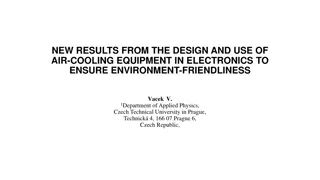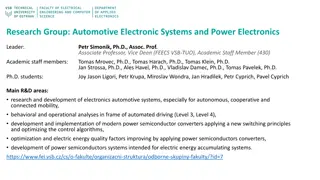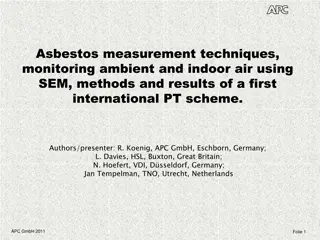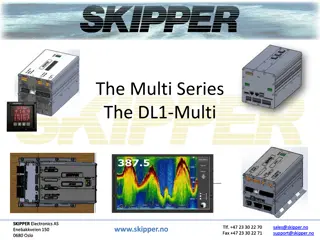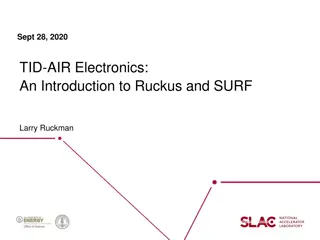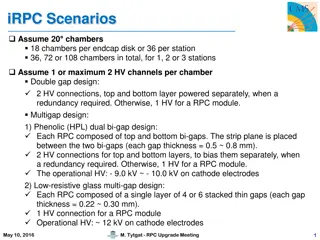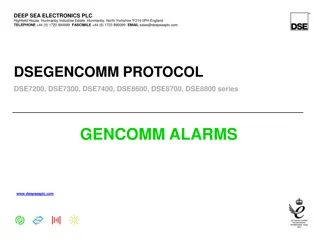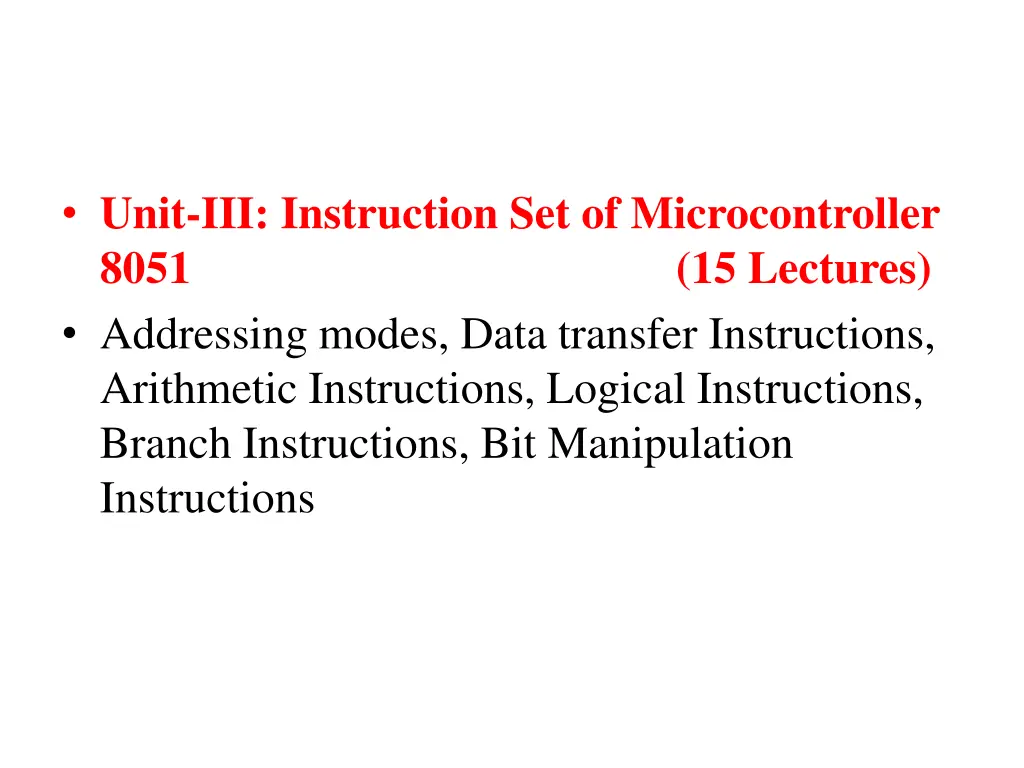
Microcontroller 8051 Addressing Modes & Instructions
Explore the instruction set of Microcontroller 8051, including addressing modes, data transfer, arithmetic and logical operations, branching, and bit manipulation instructions. Understand the various addressing modes such as register, direct, indirect, immediate constant, relative, absolute, long, and indexed. Dive into examples of immediate addressing mode and learn about operand selection in different addressing modes.
Download Presentation

Please find below an Image/Link to download the presentation.
The content on the website is provided AS IS for your information and personal use only. It may not be sold, licensed, or shared on other websites without obtaining consent from the author. If you encounter any issues during the download, it is possible that the publisher has removed the file from their server.
You are allowed to download the files provided on this website for personal or commercial use, subject to the condition that they are used lawfully. All files are the property of their respective owners.
The content on the website is provided AS IS for your information and personal use only. It may not be sold, licensed, or shared on other websites without obtaining consent from the author.
E N D
Presentation Transcript
Unit-III: Instruction Set of Microcontroller 8051 Addressing modes, Data transfer Instructions, Arithmetic Instructions, Logical Instructions, Branch Instructions, Bit Manipulation Instructions (15 Lectures)
A computer instruction is made up of an operation code (op-code) followed by either zero, one or two bytes of operands The op-code identifies the type of operation to be performed while the operands identify the source and destination of the data The operand can be:- The data value itself A CPU register A memory location An I/O port If the instruction is associated with more than one operand, the format is always: Instruction Destination, Source Thus, An instruction is made up of an operation code (op-code) followed by operand(s). The operand can be one of these- data to operate on, CPU register, memory location or an I/O port.
Addressing modes Register addressing Direct addressing Indirect addressing Immediate constant addressing Relative addressing Absolute addressing Long addressing Indexed addressing Instruction types Arithmetic operations Logical operations Data transfer instructions Boolean variable instructions Program branching instructions
Eight modes of addressing are available with the C8051 There are 8 addressing modes. The addressing mode determines how the operand byte is selected. The direct and indirect addressing modes are used to distinguish between the SFR space and data memory space. The relative instructions are based on the value of the program counter. The absolute instructions operate in the same manner. Indexed instructions use a calculation to generate the address used as part of the instruction. The different addressing modes determine how the operand byte is selected. An Addressing Mode is a way to locate a target Data, which is also called as Operand. The 8051 Family of Microcontrollers allows five types of Addressing Modes for addressing the Operands. Addressing Modes Immediate Constant Register Direct Indirect Relative* Absolute* Long* Indexed Instruction ADD A,#80H MOV A, B MOV 30H,A ADD A,@R0 SJMP +127/-128 of PC AJMP within 2K LJMP FAR MOVC A,@A+PC
Immediate addressing mode: This mode of addressing uses either an 8- or 16-bit constant value as the source operand This constant is specified in the instruction, rather than in a register or a memory location The destination register should hold the same data size which is specified by the source operand Examples: ADD A,#030H ;Add 8-bit value of 30H to ;the accumulator register ;(which is an 8-bit register). MOV DPTR,#0FE00H ;Move 16-bit data constant ;FE00H into the 16-bit Data ;Pointer Register.
Register addressing mode: The register addressing instruction involves information transfer between registers The accumulator is referred to as the A register. Example: MOV R0, A The instruction transfers the accumulator content into the R0 register. The register bank (Bank 0, 1, 2 or 3) must be specified prior to this instruction.
Direct addressing mode: This mode allows you to specify the operand by giving its actual memory address (typically specified in hexadecimal format) or by giving its abbreviated name (e.g. P3) Used for SFR accesses Example: MOV A, P3 ;Transfer the contents of ;Port 3 to the accumulator MOV A, 020H ;Transfer the contents of RAM ;location 20H to the accumulator
Indirect addressing mode: This mode uses a pointer to hold the effective address of the operand Only registers R0, R1 and DPTR can be used as the pointer registers The R0 and R1 registers can hold an 8-bit address, whereas DPTR can hold a 16-bit address Used for the upper data memory area Examples: MOV @R0,A ;Store the content of ;accumulator into the memory ;location pointed to by the contents ;of register R0. R0 could have an ;8-bit address, such as 60H. MOVX A,@DPTR ;Transfer the contents from ;the memory location ;pointed to by DPTR into the ;accumulator. DPTR could have a ;16-bit address, such as ;1234H.
Relative addressing mode: This mode of addressing is used with some type of jump instructions, like SJMP (short jump) and conditional jumps like JNZ These instructions transfer control from one part of a program to another The destination address must be within -128 and +127 bytes from the current instruction address because an 8-bit offset is used (28 = 256) Example: GoBack: DEC A JNZ GoBack ;Decrement A ;If A is not zero, loop back
Absolute addressing mode: Two instructions associated with this mode of addressing are ACALL and AJMP instructions These are 2-byte instructions where the 11-bit absolute address is specified as the operand The upper 5 bits of the 16-bit PC address are not modified. The lower 11 bits are loaded from this instruction. So, the branch address must be within the current 2K byte page of program memory (211 = 2048) Example: ACALL PORT_INIT PORT_INIT: MOV P0, #0FH ;PORT_INIT should be ;located within 2k bytes. ;PORT_INIT subroutine
Long addressing mode: This mode of addressing is used with the LCALL and LJMP instructions It is a 3-byte instruction and the last 2 bytes specify a 16-bit destination location where the program branches It allows use of the full 64 K code space The program will always branch to the same location no matter where the program was previously Example: LCALL TIMER_INIT TIMER_INIT: ORL TMOD,#01H ;TIMER_INIT subroutine ;TIMER_INIT address (16-bits ;long) is specified as the ;operand; In C, this will be a ;function call: Timer_Init().
Indexed addressing mode: The Indexed addressing is useful when there is a need to retrieve data from a look- up table A 16-bit register (data pointer) holds the base address and the accumulator holds an 8-bit displacement or index value The sum of these two registers forms the effective address for a JMP or MOVC instruction Example: After the execution of the above instructions, the program will branch to address 1F08H (1F00H+08H) and transfer into the accumulator the data byte retrieved from that location (from the look-up table) MOV A,#08H MOV DPTR,#01F00H MOVC A,@A+DPTR ;Offset from table start ;Table start address ;Gets target value from the table ;start address + offset and puts it ;in A.
Instruction Set: An instruction set (used in what is called ISA or Instruction SetArchitecture) is code that the computer processor (CPU) can understand. The language is 1s and 0s, or machine language. It contains instructions or tasks that control the movement of bits and bytes within the processor. The C8051 instructions are divided into five functional groups: Arithmetic operations Logical operations Data transfer operations Boolean variable operations Program branching operations




